
in incentives are available for Minnesota Power customers building a new home!
You may qualify for Minnesota Power’s Residential New Construction Energy Efficiency Rebate Program
Minnesota Power’s New Construction Energy Efficiency Rebate Program promotes building practices and technologies that enhance the new construction market in our region. If you are planning to build a new home that will be heated primarily with electric heat and are interested in energy efficiency, comfort, health, and durability this program is a great fit for you. The best part is you’ll have an energy advisor available to help you through the entire process.
Common types of electric heat being used in new construction homes:
- Radiant slab heating
- Air Source Heat Pumps
- Ground Source Heat Pumps
- Baseboard Heating
Perks of Participating:
- Increased HVAC incentives
- Access to an Energy Advisor
- You will have a Minnesota Power contact to help you through the entire process
Are you building a new home and considering electric heat?
-
Electric heating is very versatile and can offer many heating options to meet your needs, such as:
- Radiant heat, e.g., cover heaters, ceiling panels, radiant slab heating
- Conventional heat, e.g., baseboards and boilers
- Fan forced heat, e.g., electric furnaces, plenum heaters, wall heaters, kickspace heaters, floor heaters, air source heat pumps and ground source heat pumps
- Electric heating offers a high degree of reliability with time-tested, proven heating technology.
- Electric heating is considered to be one of the most reliable systems available today.
- There’s no flame, which means less fire hazard and no combustion by-products that could present an indoor air quality concern.
- Eliminates sooting, back-drafting or fuel handling.
- Individual room units provide precise room-by-room temperature control to fit your lifestyle, save energy and allow for individual comfort. Electrical heat lets you put the right amount of heat exactly where you need it.
- In most cases, there are no, or a limited number, of moving parts.
- Installation and maintenance costs are low, and competitive Dual Fuel and Fixed Off-Peak storage rates make electric heat economical.
What are the requirements to participate?
- Home will be heated primarily with electric heat
- Home will have an Energy/Heat Recovery Ventilator (ERV/HRV) with a minimum sensible recovery efficiency (SRE) of 60% or greater
What rebates and incentives are available in the program?
Air Sealing Incentives: Measured by ACH50 (Air changes per hour at 50 pascals)
| Available Rebates | Amount |
|---|---|
| $1,700 | |
| 1.00-1.49 ACH50 | $1,200 |
| 1.50-1.99 ACH50 | $600 |
| 2.00-2.49 ACH50 | $300 |
Insulation Incentives
| Available Rebates | Amount |
|---|---|
| Continuous Wall Insulation - R-21 +5 or equivalent U-value | $800 |
| Foundation Walls - R-20+ | $450 |
| Under-slab Insulation (R-10 for non-heated and R-20 for heated) | $225 |
| Attic Insulation - R-60+ | $125 |
| Exposed Floor Insulation - R-38 +5 or equivalent U-value | $100 |
Window Incentives
| Available Rebates | Amount |
|---|---|
| Efficient Windows - < 0.28 U-value | $400 |
HVAC Bonus Incentives
| Available Rebates | Amount |
|---|---|
| Air Source Heat Pump (ASHP) - Cold Climate | $1,500 |
| Ground Source Heat Pump - MNGHPA Master Installer (per ton) | $1,200 |
| Ground Source Heat Pump (per ton) | $1,000 |
| ASHP - ENERGY STAR® | $500 |
| Air-to-Water Heat Pump (per ton) | $400 |
| ERV/HRV that meets program requirements | $300 |
Water Heating Incentives
| Available Rebates | Amount |
|---|---|
| Heat Pump Water Heater | $600 |
Building Certification Bonus
| Available Rebates | Amount |
|---|---|
| ENERGY STAR®, Indoor airPLUS, DOE Zero Energy Ready Homes, PHIUS (Passive) | $250 |
Additional Rebates
| Available Rebates | Amount |
|---|---|
| Bonus rebate for affordable housing | $1,000 |
| ECM Circulator Pump | $200 |
**Visit https://www.mnpower.com/ProgramsRebates/RebatesAndSavings for more information on Minnesota Power Rebates and to see the additional appliance/thermostat rebates you may qualify for!
Participation Roadmap

Contact Minnesota Power to learn about the advantages of building a new home with energy efficient technology. Minnesota Power representatives can go over the Residential New Construction program with you, answer questions, and help you apply.
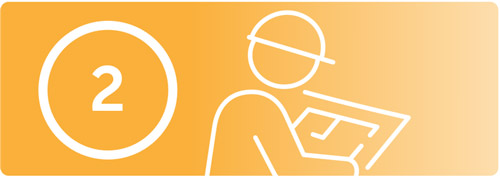
After applying for the program, you will be set up with an Energy Advisor who will provide guidance related to energy efficiency and answer all of your questions. You can utilize this advisor as much or as little as you’d like and once you have your plans finalized, they will confirm that you qualify for the program.
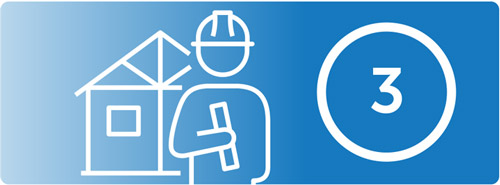
This program includes a mid-work site inspection, completed before the drywall goes up. This inspection includes a free blower door test which will help identify air leaks that can greatly reduce the efficiency of your home. Fixing issues early can save energy and money long term and additionally can help you qualify for the largest incentives.
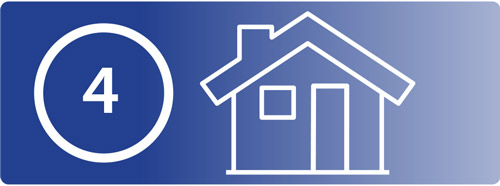
While you are shopping to furnish your home, make sure to take advantage of Minnesota Power rebates on ENERGY STAR® appliances. Your Minnesota Power representative can help answer any questions. You simply hang on to your receipts and we will ensure you receive all of the available rebates once your home is finished!
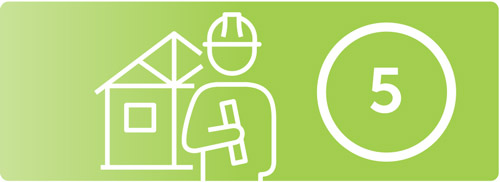
Congratulations! You are almost ready to move into your new energy-efficient home. Contact Minnesota Power and schedule a final site inspection. An Energy Advisor will visit the property to perform final tests to measure the efficiency of your home and calculate your rebates! You’ll receive your rebate check 6-8 weeks later.
How to Participate
Online applications will be down for scheduled maintenance on Monday, February 3 starting at 10:00am CST. They are expected to be available by Thursday, February 6. For immediate assistance, please call 218-355-2843.
Get started with our online application or contact us to get started
CONTACT INFORMATION
Phone: 218-355-2843
Email: customerprograms@mnpower.com
What you get with the New Construction Energy Efficiency Rebate Program:
- Assistance from Minnesota Power when filling out forms and applications for service and rebates
- Access to an energy advisor with an optional plan review prior to construction
- Optional mid-work inspection including free blower door test
- Final blower door test and thermal imaging scan
- Access to available rebates
Small changes add up to significant energy savings
Customer Testimonial: Josh and Emily Bellamy
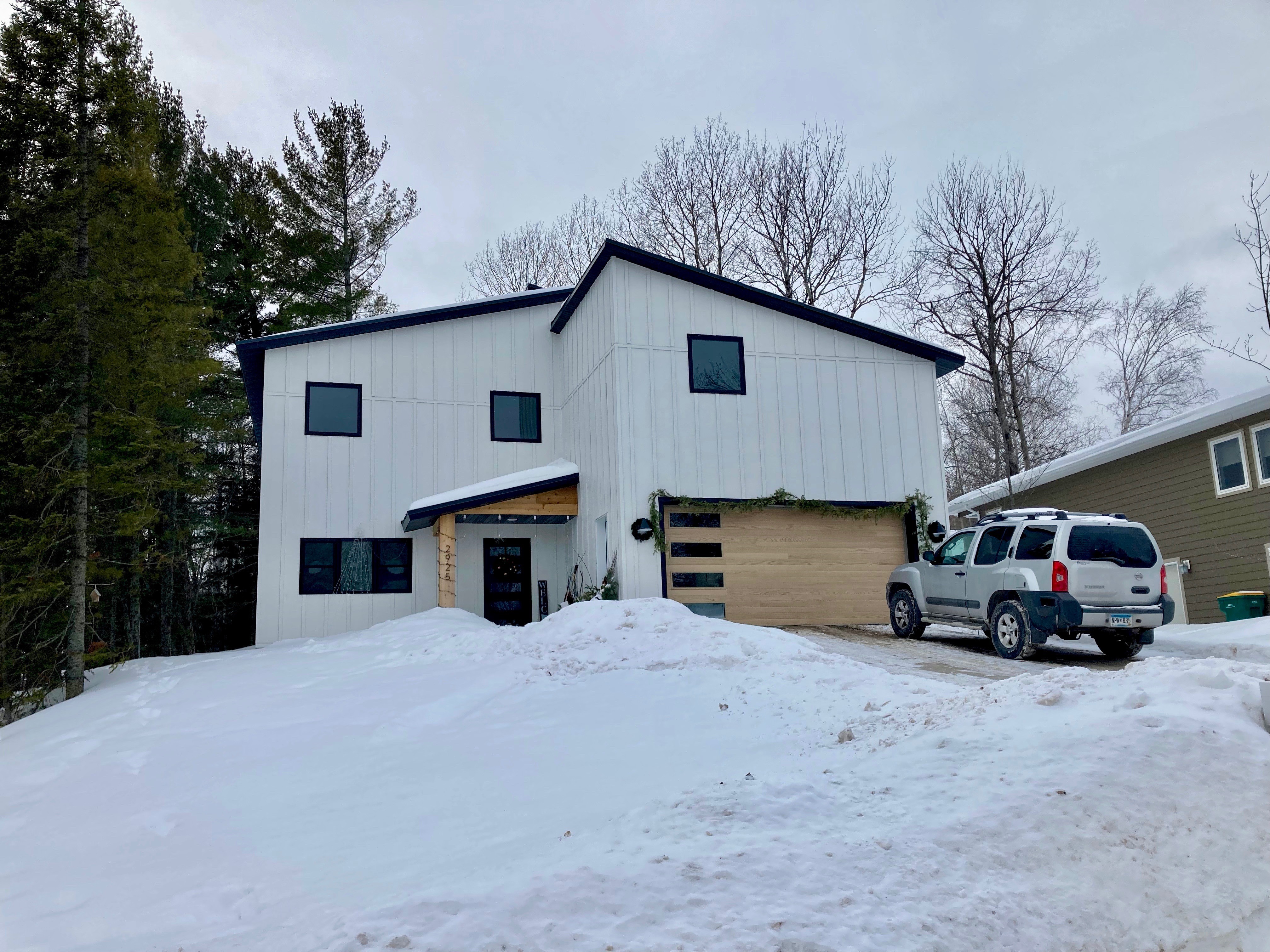
Josh and Emily Bellamy's new home in Duluth is the first project to make use of Minnesota Power's Residential New Construction Energy Efficiency Rebate Program
Frequently Asked Questions
Q. What types of electric heat are there?
- Radiant heat, e.g., cover heaters, ceiling panels, radiant slab heating
- Conventional heat, e.g., baseboards and boilers
- Fan forced heat, e.g., electric furnaces, plenum heaters, wall heaters, kickspace heaters, floor heaters, air source heat pumps and ground source heat pumps
Q. Can I be in the program if I have an additional fuel source?
Q. Can I be in the program if I’m using cold climate air source heat pumps?
Q. What is an ERV/HRV and why do I need one?
Q. Do I need to qualify for all of the Residential New Construction rebates to participate in the program?
Q. If I’m in the program will I still qualify for additional appliance rebates?
Q. Do I need to utilize the Energy Advisor and other free services?
Q. Can I participate if I’m building a multifamily building (duplex/triplex/etc.)
Q. Are the HVAC and water heater rebates in addition to your standard rebates?
Q. What is a blower door test?
Questions on Energy Conservation?
Phone: 218-355-2843
Email: customerprograms@mnpower.com
Sign up for our Energy Team emails here


